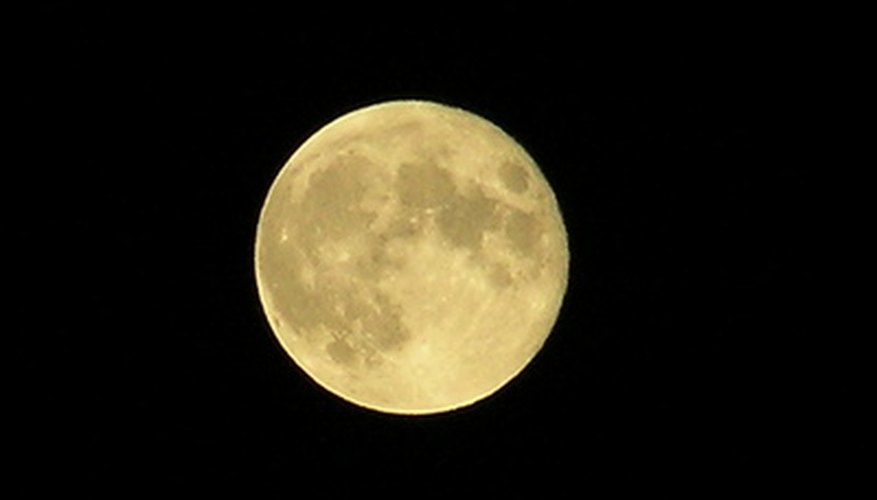A moon gate provides a perfectly circular, moon-shaped entrance to your garden. Originating in China and Japan, this 360-degree entrance is believed to have contemplative properties, as if walking through it is like walking through a door between two realities.
Coursed-stone moon gates are very strong and very sought after for their beauty. To build one requires a thorough understanding of the physical forces that support a good stone arch, as well as the skill to cut the stone.
Make the half-moon form. Dimensions are completely dependent on the size you choose for the moon gate.
Cut the plywood in a circle the size of your moon gate entrance. This will probably take two sheets of plywood. Mark the centre of the circle across the middle, splitting the circle into two halves. Cut the halves.
- A moon gate provides a perfectly circular, moon-shaped entrance to your garden.
- Cut the plywood in a circle the size of your moon gate entrance.
Measure and cut a frame for each half. Cut three 2-by-4 boards to form a triangle, with the base along the straight edge of the half moon plywood sheets. Nail the frames onto each half moon, with the 4 foot side flat against the plywood. Each half moon should now have a 2-by-4 triangle flat against its side.
- Measure and cut a frame for each half.
- Cut three 2-by-4 boards to form a triangle, with the base along the straight edge of the half moon plywood sheets.
Cut three 2-by-4s the same length, which will be the width of your wall and moon gate. Nail them between the two halves, at the corners of the triangles. These separate and secure the two halves as cross-braces. You will now have a giant three-dimensional D, with two half circles connected by three cross-braces.
The lateral surface of the D on the curved edge will still be open. Now you have to "close" it.
Cut several pieces of plywood exactly the width of the form, Screw them on, one at a time, with the edges flush, bending as you go to ensure the plywood "wraps" around the curve. You now have the moon gate form. It will look like half of a giant hat box.
Build the wall until it is at the same height as the bottom of the moon gate opening. If you want the moon gate at ground level, stop your last course when the wall -- which will begin underground on the footer -- is at ground level. If you want an elevated moon gate entrance, stack the wall until you are at the desired elevation for the bottom of the circle.
- The lateral surface of the D on the curved edge will still be open.
- If you want an elevated moon gate entrance, stack the wall until you are at the desired elevation for the bottom of the circle.
Set the half moon form, curve down, on the wall where you want the gate. If the form does not sit stably, trim the stone until the form sits levelly and stays there without holding it up. Secure the form with 2-by-4s, Nail a piece of 2-by-4 laterally across each side of the half moon, along the straight edge. Set the form exactly as you want it on the wall. Place four 2-by-4 "legs," two on each side, firmly on the ground beside the form. Tap them with a hammer to make sure the ground will not shift. Then nail the legs onto the lateral 2-by-4s you nailed to the form. This will look like a great D, curved side down, is being held up by a giant H.
- Set the half moon form, curve down, on the wall where you want the gate.
- Then nail the legs onto the lateral 2-by-4s you nailed to the form.
Coffin-cut the border stones. These will frame the moon gate entrance. The ends should be four-sided, with a narrow base and wide "top," like looking at the end of a coffin. Each stone will have to be measured for cutting against both the form and the adjacent stone. Border stones need to reach across the entire width of the wall and gate. Save the short stuff for detail work.
Remove the legs from your H-frame. You have built the bottom of the circle. Now you are building the top. Flip the plywood form when the stone wall has reached halfway up the circle. Re-secure the form by reattaching the H-frame "legs" on each side of the form again, this time with the D-curve facing up. Plumb the alignment of the top to ensure it is consistent with the alignment of the bottom.
- Coffin-cut the border stones.
- Flip the plywood form when the stone wall has reached halfway up the circle.
Select and cut the border stones, using coffin-cuts again to ensure maximum stability of the arch. Place the border stones to test their fit. They must be very tight, load-bearing, and without shift gaps. Test the gate by lowering the form a couple of inches and standing on it. Build the rest of the wall around the moon gate.
WARNING
Stone cutting for arches requires some experience. If this arch is not structurally sound, it can hurt people. Make sure an engineer checks its stability.
